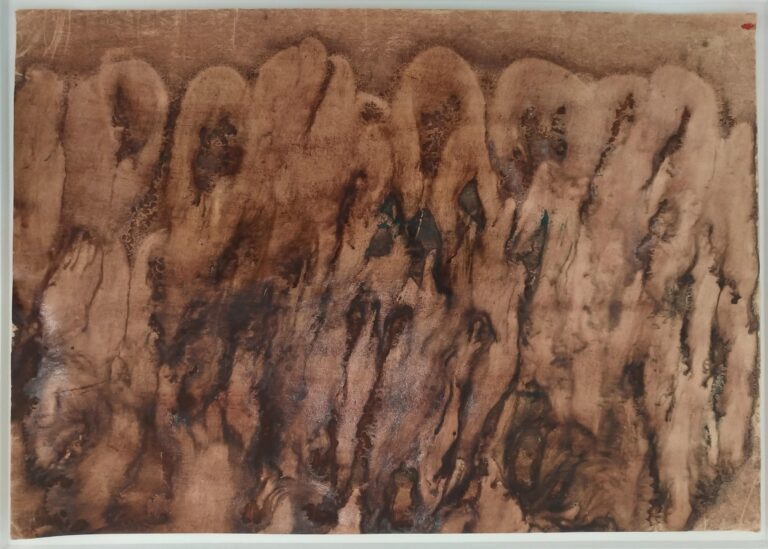Mark Tobey
Works
Biography
One of the most highly respected American artists of the 1950s and 1960s, Tobey’s name is associated first and foremost with his so-called “white writing” paintings; a calligraphic style characterized by a field of intricate and delicate overlapping pale lines. It was a form of gestural abstraction designed to inspire a “higher state of consciousness” in the spectator and it would bring the artist numerous international plaudits and awards. Although in the US Tobey’s mindfulness was somewhat “outmuscled” by the action paintings of Jackson Pollock, his push for an “all-over abstraction” gave rise to a spiritual style that amounted to a wholly unique visual language; quite independent of any one international school or location. Indeed, Tobey was a legendary wanderer who travelled through the Americas, Europe and the Far East in search of the influences that would help him refine his highly personalized conception of abstract painting.
Accomplishments
In 1918 Tobey was introduced to the non-sectarian Baha’i Faith and its idea of universal consciousness. Through its teachings, he developed a way to use meditation as a means of generating abstract shapes and gestures. The result was a distinctive visual language that could articulate a unified conception of life by combining Western art practices with the energy and wisdom of Eastern mysticism.
Tobey worked largely in water-based media, such as tempera and gouache, and on small-scaled canvases and paper. His all-over abstractions, permeated with a multitude of lines and fragmented forms, captured calligraphic rhythms and gestures that broadened the definition of mid-century American modernism.
From the very beginnings of his career, Tobey showed a passion for experimentation. Pushing the fixed rules of Cubism, he drew on more animate subject-matter using rich rounded shapes and a wider range of colour. The result was a form of “vitalism” that would push the great modernist experiment to look outside the realms of the physical world or any one of its great religions.
In later years, Tobey devoted himself to the study of Zen Sumi techniques. By “emptying his mind” of all extraneous thoughts, he found the ideal mental state in which to paint and became positively liberated. By letting “nature take control” over his work, he produced a series of splashed black ink abstractions that demonstrated how art might exist independently of any pre-given aesthetic preferences or ideological influences.
Tobey übersiedelt als Sechzehnjähriger 1906 nach Chicago. Dort studiert er am Art Institute. Seine Berufslaufbahn beginnt er als Angestellter in einem Studio für Mode-Design 1908. Seit 1911 ist er in New York selbstständiger Modezeichner. In den folgenden Jahren beschäftigt sich Tobey intensiv mit den Schriften der arabischen Literatur und mit den Lehren der ostasiatischen Philosophie. Das führt dazu, dass er sich 1918 der Baha-`i-Glaubenslehre anschließt. Von 1922 bis 1925 ist er als Kunsterzieher in Seattle, von 1930 bis 1937 als Lehrer an der Dartington Hall School in Devonshire/ England tätig.
Reisen nehmen in Tobeys Leben einen wichtigen Platz ein. Der Künstler besucht 1925 zum ersten Mal Europa, wenig später Persien. Eine längere Reise führt Tobey in den dreißiger Jahren nach Shanghai und Japan. Hier beschäftigt er sich für einige Zeit in einem Zen-Kloster in Kyoto mit der Lehre und der Malerei des Zen und den Formen der Hai-Ku-Dichtung und der Kalligrafie. Tobey schafft 1938 eigene musikalische Kompositionen. Er verlässt im gleichen Jahr England und zieht zurück nach Seattle, wo er bis 1960 lebt. Im gleichen Jahr übersiedlung Tobey nach Basel, wo er bleibt.
Tobey entwickelt unter dem Einfluss der fernöstlichen Kunst seine berühmten “White Writings”. Diese stellen ein Netzwerk kalligrafisch durchmodellierter feiner Zeichen dar. Die Anfangs noch leicht gegenständlich Arbeiten, werden aber zunehmend abstrakt und entsprechen so dem Ausdruck der meditativ-kontemplativen Lebenshaltung des Künstlers. 1944 findet die erste Einzelausstellung dieser Werke in der Willard Gallery, New York statt. Eine Einzelausstellung im Whitney Museum of American Art, New York, folgt 1951. Die Ausstellung wird zuvor in San Francisco, Seattle und Santa Barbara gezeigt. Tobey bringt diese Wanderausstellung den internationalen Durchbruch. Von nun an, ist er auf den wichtigen internationalen Ausstellungen vertreten, wie z.B. 1959 und 1964 auf der documenta in Kassel. Die Smithsonian Institution in Washington zeigt 1974 eine große Retrospektive. 1984 in der National Gallery of Art, Washington, 1989 im Museum Folkwang, Essen und 1990 in der Galerie Beyeler Basel, sind weitere posthume Einzelausstellungen zu sehen.
